Before & After Photos That Prove Keratin Treatments Can Make Hair Gorgeous
If you've got frizz, flyaways, coarse hair or breakage, you've got to see this!
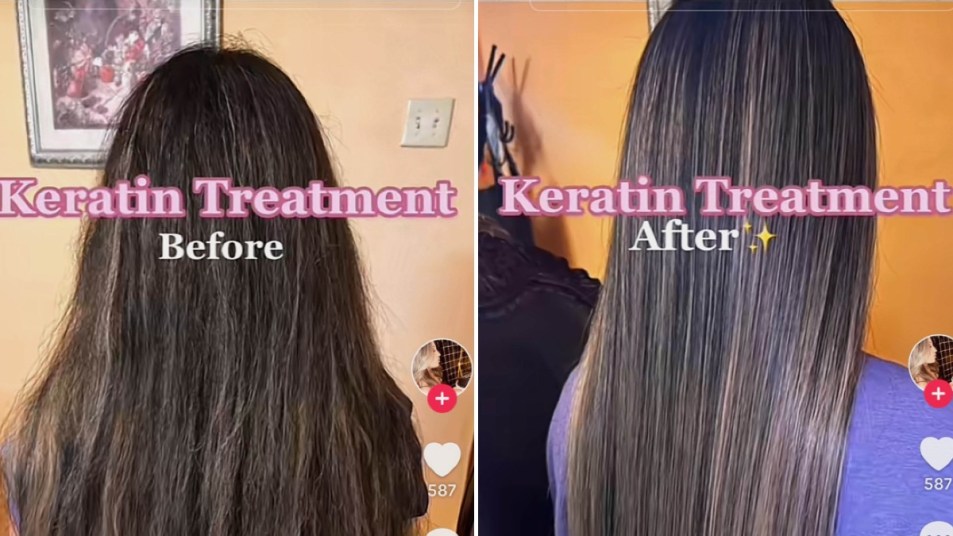
If you have the frizz, coarseness or flyaways that come with damaged or aging hair, you’ve probably spent a good bit of time researching tips and tricks for thickening your mane. Perhaps you’ve tried a few of the serums, shampoos and oils swirling around the internet. One treatment that’s been making waves on social media recently that’s been helping damaged hair look glossy? Keratin treatments. Women with frizzy, or curly hair flock to this treatment to tame the frizz, straighten out curls and add shine back into hair, but a surprising and welcome side effect? It also helps hair look and feel more voluminous! Read on to learn more about the treatment and to see keratin treatment before and after photos so you can see for yourself how it transforms tresses.
What exactly is keratin?
Keratin is a type of fibrous, protective protein found naturally in hair, skin and nails, explains Madison Roulan, co–owner of New-York based Rule On Salon. “It’s basically a structural building block; roughly 90 percent of your hair is made up of the stuff. When keratin protein is added to hair care products (like shampoo or conditioner), it creates long-lasting protection against damage,” Roulan adds.
What is a keratin treatment?
“A keratin treatment is a popular chemical-based treatment that aims to recover the elasticity, luster and health of hair,” says Roulan. These treatments can also alter your hair texture, straighten natural hair or just help you spend a little less time with your flat irons and blow-dryers.
During a typical keratin hair treatment, your stylist will use a mixture of powerful chemicals to apply a coat of keratin to your hair, says Roulan. This process seals your hair’s cuticle (a.k.a. the protective outer layer) to lock moisture into each strand. Then, after being heated and blow-dried, your hair will be straightened with a flat iron by your stylist to seal and activate the protein coating. You’ll then go home and keep your hair dry for about a week before returning to the salon to have the chemicals washed out, and a setting treatment applied.
The best way to fully understand this treatment and how it might affect your hair is by heading to the salon. “Simply ask your stylist about a keratin treatment, such as a Brazilian blowout, which is a popular brand,” Roulan recommends.
As for price: On average, a basic keratin treatment might start around $150 to $200, butthey can cost up to $500 or more, especially in high-end salons, says Roulan. Some salons also offer different levels of keratin treatments, with varying prices based on the intensity of the treatment.
What are the benefits of a keratin treatment for aging hair?
Keratin treatments work to replenish lost keratin in the hair shaft, which can make hair stronger and much less prone to breakage, explains Roulan. In fact in a 2018 study in the International Journal of Cosmetic Science, researchers found that keratin smoothed hair and increased its strength by 40 percent. This can mean hair being able to grow longer, as the strands are less likely to break.
What are the benefits of keratin treatment for thin hair?
Keratin not only strengthens hair, keratin treatments can also help hair look and feel thicker. In another 2018 study published in Biotechnology Reports, scientists found that one type of keratin protein enlarged the diameter of damaged hair by almost 50 percent. So, if you’re on a mission to achieve a thick, gorgeous mane, a keratin treatment for thin hair might be able to help.
Do keratin treatments pose any risks?
Unfortunately, there are a few risks associated with keratin treatments. For those hoping to boost hair growth, the most important one is the ingredient list. That’s because keratin isn’t actually the star of the show — the chemical formaldehyde is what straightens your tresses (and keeps them straight for several months). To some, it’s a necessary evil that ensures the keratin treatment binds to hair strands, say experts. Still, formaldehyde is toxic. While there’s no scientific research that shows a direct link between formaldehyde and hair loss, there’s a growing chorus of women who report shedding and thinning hair after the application of these strong chemical treatments, says Roulan.
What are the other benefits of a keratin treatment
Keratin prevents frizz
If frizzy hair is the bane of your existence, a keratin treatment may be your saving grace. This is because a keratin treatment fills in the porous gaps in strands that cause the frizz, says Roulan. Better still, keratin smoothing treatments are better for you than other straightening treatments (like chemical relaxers).
“Most of my clients come in because of their unruly frizzy texture,” says Roulan.“The product we carry, Brazilian Blowout, repairs the hair and seals down the cuticle to repair and create a healthier hair texture.”
Keratin boosts shine
In addition to making hair frizz-free, a keratin chemical treatment can also improve luster and leave locks shinier. This is especially beneficial for women with naturally curly hair who don’t typically see the shine in their mane — with a keratin treatment, shiny hair happens! An indirect benefit of shine, says Roulan? It reflects light for the illusion of thicker hair.
Keratin helps repair damage
Keratin doesn’t just give you the shiny, straight hair of your dreams. A keratin treatment adds an extra layer of protection to hair that’s been damaged by chemicals or hair product build-up, explains Roulan. Keratin also works to replenish hair during specific seasons and weather conditions (when strands are prone to dryness). “Maintaining good hair health via keratin treatments can help prevent split ends and breakage by giving tresses an extra boost of moisture,” Roulan adds. “As the treatment locks hydration inside the hair shaft.”
“The purpose of the treatment is to give you that shiny, silky, soft and smooth hair,” says Philadelphia-based hairstylist Gemanael Parks, who also notes that the treatment typically lasts around five months. However, the effects can last longer with proper maintenance and upkeep after the initial treatment.
Keratin treatment upkeep and maintenance
Just getting a keratin treatment done can go a long way towards improving the texture and health of your hair. But to maximize the benefits of this treatment, hairstylists recommend a little bit of upkeep.
“Aftercare for your keratin treatment is pretty simplified, but varies based on which brand you received,” Roulan explains. She specifically recommends using a sulfate-free, paraben-free shampoo and to avoid any bleaching or highlighting after the treatment.
“Always do your lightening services before your keratin treatment,” Roulan says. “And try your best to avoid salt water, chlorine and super hot showers.”
Keratin treatment before and afters in salon and at home
To decide if this treatment is worth it for you, just check out these hair transformations:
1. Keratin treatment for fine hair before and after: For frizz-free hair that also looks thicker
This video shows from YouTuber Dominique Sachse shows the transformation from frizzy and thin hair to smooth, yet thick-looking strands that still have tons of volume.
2. To make hair look hydrated
TikTok user Isis Davila demonstrates a keratin treatment on one of her clients. Before receiving the keratin treatment, her client’s hair is visibly dry and somewhat frizzy. After the keratin treatment, Davila’s client has much shinier, healthier, frizz-free hair.
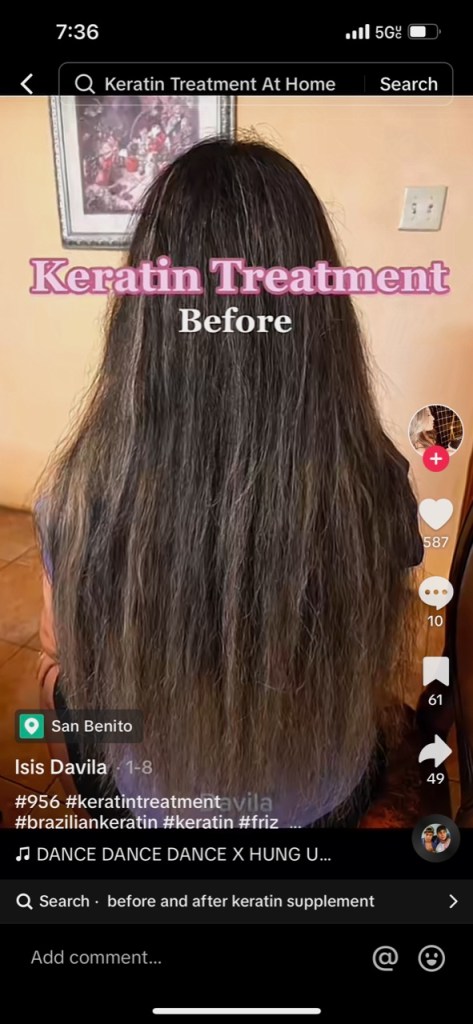
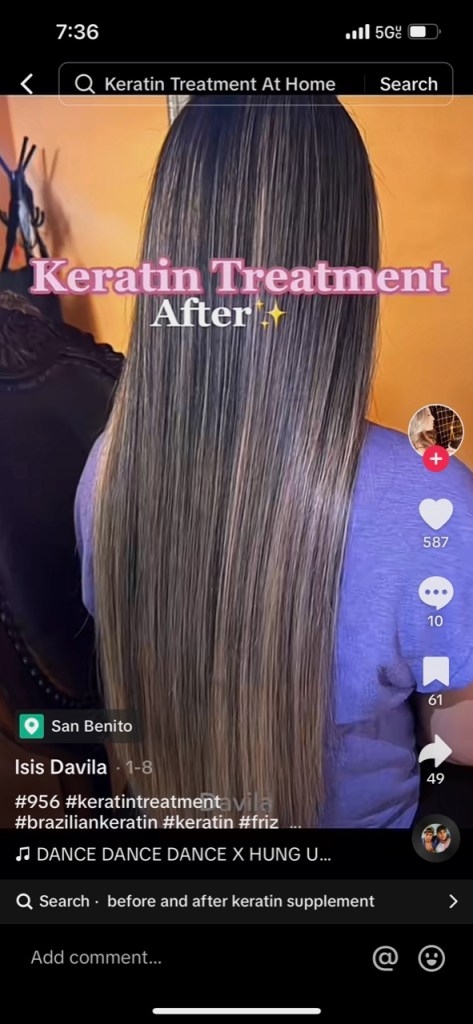
3. Keratin treatment for thin hair before and after: To straighten without losing volume
TikTok user @Georgesian has unrulw waves before getting a keratin treatment done on her hair that looks smooth, yet still voluminous after.
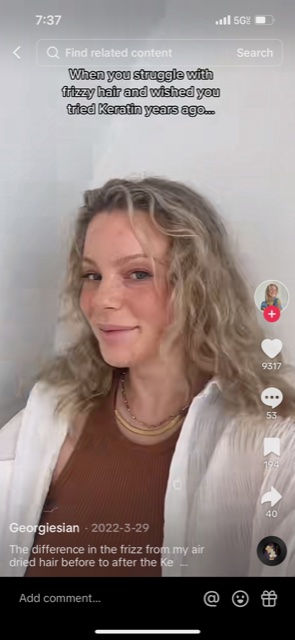
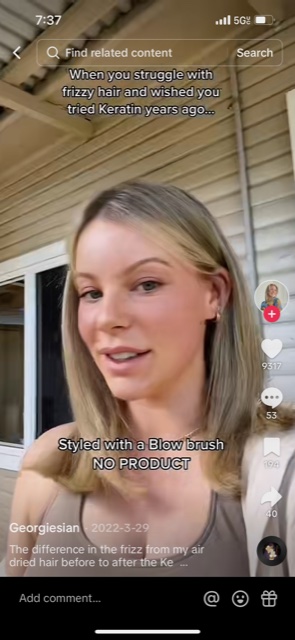
4. To enhance curls
TikTok user Becki Beavan demonstrates the effects of keratin treatment on curly hair. On the left, her client’s curls are undefined and slightly frizzy. On the right, after the treatment, they are well-defined and hydrated.
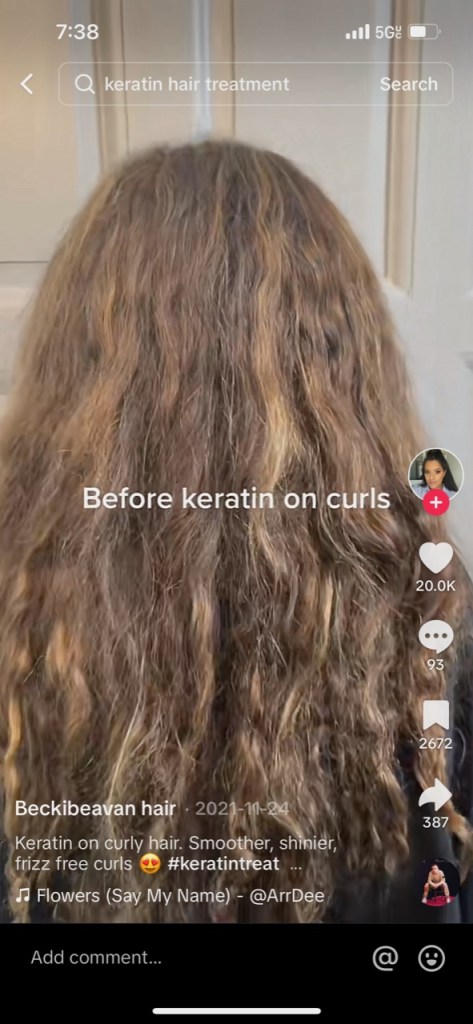
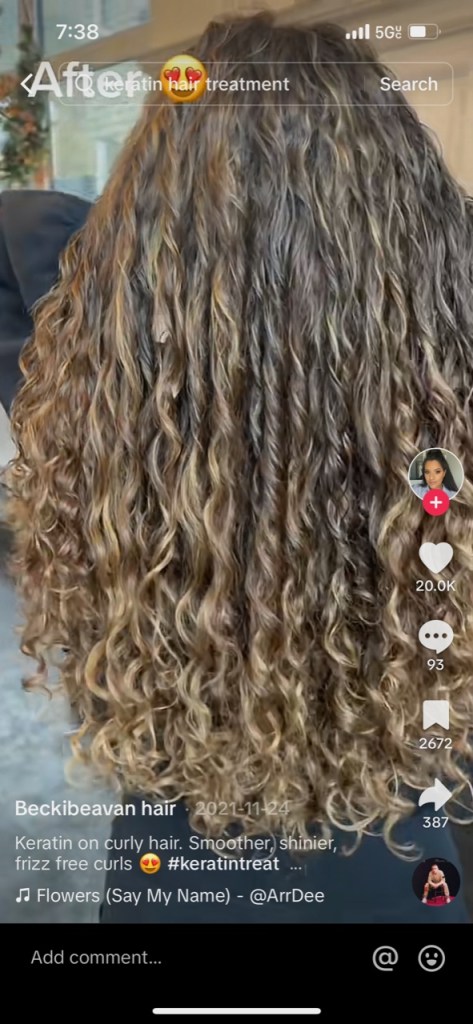
5. To add shine
TikTok user and hairstylist Elza Kalia shows the difference after of a seven hour long keratin treatment on one of her clients. The results? Shiny, healthy, straight strands.
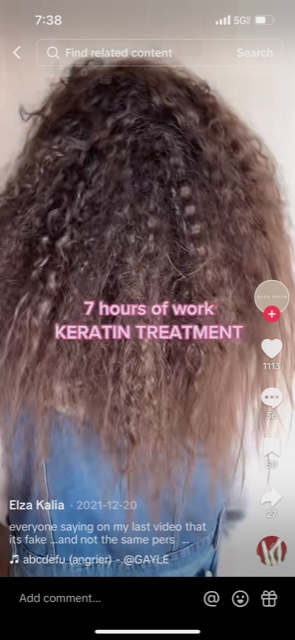
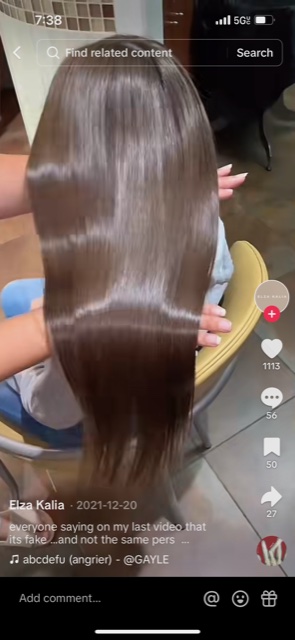
4. For sleek hair that still looks thick
Keratin treatments are typically done in a hair salon with a professional, but you can also purchase DIY treatments to try at home. Below, beauty YouTuber Julia Caban explains how she DIY’ed her keratin treatment at home using drugstore products.
Who should *not* do a keratin treatment?
It’s no secret that getting a beauty treatment done in the salon can be pretty pricey. Being able to smooth and soften your locks at home can save both time and money, but a word of warning: Like any type of chemical processing, there are some risks associated with DIY’ing a keratin treatment says Roulan. For instance, it’s probably best to skip this treatment if you have asthma or any allergies to formaldehyde, or if you’re pregnant or breastfeeding. When in doubt, the safest option is always to have it done by a professional.
For more hair care tips, click through these stories:
How Coconut Oil Can Strengthen Hair, Reverse Thinning and More
The Secret to High Volume ‘Summer Hair’ All Year Long: Sea Salt Spray
Top Hair Loss Doctor Explains How Rice Water Can Help Reverse Thinning + Add Shine












